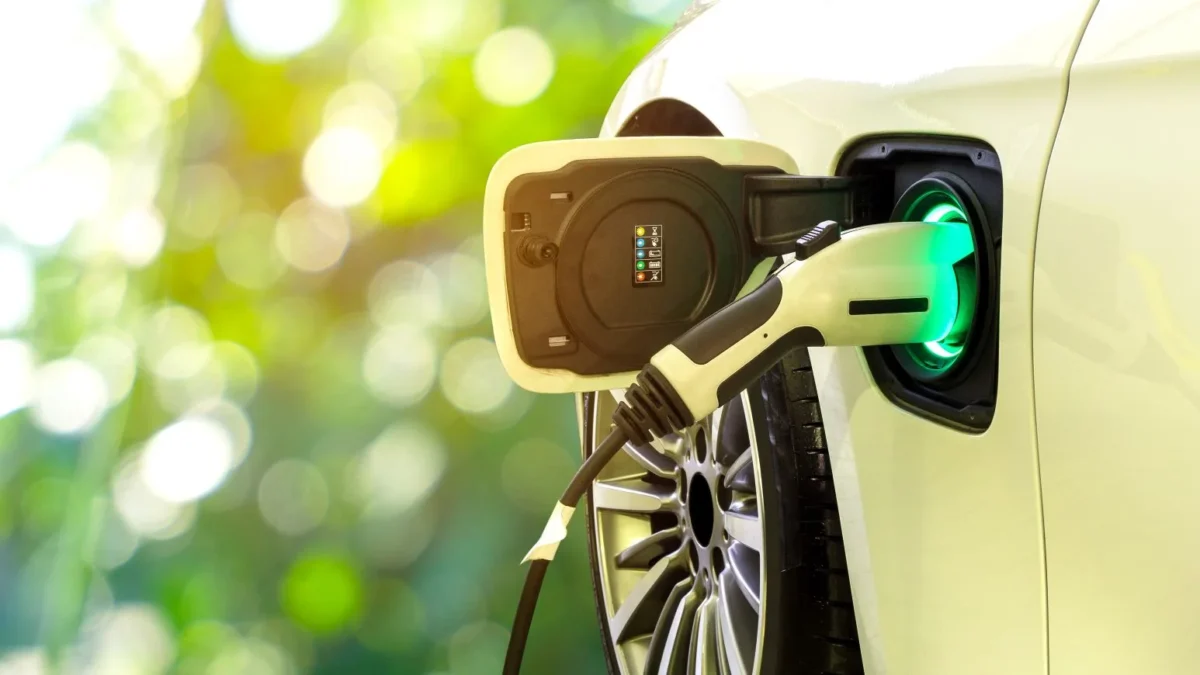Over the past ten years, the market for electric vehicles (EVs) has grown remarkably thanks to government incentives, environmental concerns, and technological breakthroughs. The global energy landscape is rapidly changing, and the electric vehicle (EV) sector has the potential to significantly impact carbon emissions reduction and decrease dependency on non-renewable fossil resources. Though the electric vehicle market is growing quickly, there are a number of obstacles in its way. These difficulties also offer chances for progress and creativity. This blog article explores the main obstacles and possibilities facing the electric car industry, providing a thorough analysis of the market’s present state and potential future developments.
1. Charging Infrastructure: A Double-Edged Sword
Challenges:
One of the most significant barriers to widespread EV adoption is the lack of comprehensive charging infrastructure. While urban areas in developed countries are gradually seeing an increase in public charging stations, rural areas and developing nations lag behind. The fear of “range anxiety” — the concern that a vehicle will run out of power before reaching a charging station — remains a substantial deterrent for potential EV buyers.
Moreover, the inconsistency in charging standards across different regions and manufacturers complicates the expansion of the charging network. For example, different types of connectors, varying charging speeds, and incompatible payment systems create a fragmented experience for EV owners, leading to frustration and decreased convenience.

Opportunities:
Despite these challenges, the need for improved charging infrastructure presents significant opportunities. Companies and governments are increasingly investing in the development of fast-charging networks, which can charge an EV in minutes rather than hours. Innovations such as wireless charging and ultra-fast charging stations are also being explored to enhance user experience.
Furthermore, the rise of smart grids and renewable energy integration opens up opportunities for decentralized charging solutions. Solar-powered charging stations, for instance, could reduce the dependence on traditional power grids and provide a more sustainable charging option. Collaborations between automakers, energy providers, and tech companies could accelerate the deployment of a robust and user-friendly charging infrastructure, addressing one of the key pain points in the EV market.
2. Battery Technology: The Heart of the Matter
Challenges:
Battery technology lies at the core of electric vehicles, directly impacting their range, cost, and performance. Despite significant advancements, current lithium-ion batteries still have limitations, including high production costs, limited energy density, and concerns about longevity and safety. The extraction and processing of raw materials like lithium, cobalt, and nickel also raise environmental and ethical concerns, as these processes are often associated with human rights violations and ecological damage.
Additionally, battery disposal and recycling pose environmental challenges. As the number of EVs on the road increases, so does the volume of used batteries, necessitating effective recycling methods to prevent waste and recover valuable materials.
Opportunities:
The challenges associated with battery technology offer immense opportunities for research and innovation. Breakthroughs in solid-state batteries, which promise higher energy density, faster charging times, and improved safety, could revolutionize the EV market. Companies and research institutions are also exploring alternative materials such as silicon, sulfur, and graphene to enhance battery performance while reducing reliance on scarce and environmentally harmful resources.
Moreover, advancements in battery recycling techniques can turn waste into wealth. Efficient recycling methods can recover critical materials for reuse in new batteries, reducing the environmental impact and lowering production costs. Governments and private entities are increasingly investing in battery recycling infrastructure, recognizing its potential to create a circular economy within the EV industry.
3. Cost and Affordability: The Price of Progress
Challenges:
The high upfront cost of electric vehicles remains a significant barrier to mass adoption, particularly in price-sensitive markets. Although EV prices have been declining over the years, they are still generally higher than those of internal combustion engine (ICE) vehicles. The cost of batteries, which accounts for a substantial portion of an EV’s total cost, is a major contributing factor.
Additionally, the limited availability of affordable EV models restricts consumer choice, especially in emerging markets where lower-income populations are less likely to invest in premium-priced vehicles. The perception that EVs are expensive luxury items further hinders their acceptance among the general public.
Opportunities:
The cost challenge presents a unique opportunity for automakers to innovate and reduce production costs. As battery technology advances and economies of scale are achieved, the price of EVs is expected to decrease further, making them more competitive with traditional vehicles. Governments can also play a crucial role by offering incentives, subsidies, and tax breaks to make EVs more accessible to a broader range of consumers.
Moreover, the development of affordable EV models tailored to the needs of emerging markets could unlock new growth opportunities. Companies that successfully produce cost-effective, reliable, and efficient EVs for these markets stand to gain a significant competitive advantage.
4. Environmental and Ethical Concerns: A Green Dilemma
Challenges:
While electric vehicles are often touted as a green alternative to traditional vehicles, they are not without environmental and ethical challenges. The production of EV batteries requires the extraction of rare minerals, often from regions with poor labor practices and significant environmental degradation. Additionally, the energy used to charge EVs may come from non-renewable sources, potentially offsetting some of the environmental benefits.
The disposal of used batteries also poses a significant environmental risk. Without proper recycling, the toxic chemicals in batteries can contaminate soil and water, leading to long-term ecological damage.
Opportunities:
Addressing these environmental and ethical challenges presents an opportunity for the EV industry to lead by example in sustainability. Companies can invest in ethical sourcing of materials, ensuring that they are obtained from suppliers who adhere to fair labor practices and environmental regulations. The development of sustainable mining practices and the use of alternative materials could further reduce the environmental impact of battery production.
Additionally, integrating renewable energy sources into the charging infrastructure can enhance the environmental benefits of EVs. By powering charging stations with solar, wind, or hydroelectric energy, the carbon footprint of electric vehicles can be significantly reduced, making them a truly green alternative to traditional vehicles.
5. Consumer Awareness and Acceptance: Bridging the Knowledge Gap
Challenges:
Consumer awareness and acceptance are crucial for the widespread adoption of electric vehicles. However, there is still a significant knowledge gap among the general public regarding the benefits and functionality of EVs. Misconceptions about range limitations, charging difficulties, and maintenance requirements can deter potential buyers.
Additionally, the lack of widespread exposure to EVs, particularly in rural and less developed regions, contributes to a slower rate of adoption. Consumers may be hesitant to switch from traditional vehicles due to unfamiliarity with EV technology and concerns about resale value.
Opportunities:
Increasing consumer awareness and education about electric vehicles presents a significant opportunity for the industry. Automakers, governments, and environmental organizations can collaborate to launch awareness campaigns that address common misconceptions and highlight the benefits of EV ownership. Test drive events, public demonstrations, and informational content can help familiarize consumers with EV technology and build confidence in their decision to switch.
Moreover, the development of second-hand EV markets can alleviate concerns about resale value and make electric vehicles more accessible to a broader audience. As more consumers become comfortable with the idea of owning an EV, the market is likely to see accelerated growth.
6. Government Policies and Regulations: The Push and Pull Factors
Challenges:
Government policies and regulations play a critical role in shaping the electric vehicle market. While some regions have implemented supportive policies, such as tax incentives, rebates, and emissions standards, others have been slower to adopt measures that encourage EV adoption. Inconsistent policies across different countries and regions can create uncertainty for automakers and consumers alike.
Furthermore, the potential for policy changes, such as the reduction or removal of incentives, poses a risk to the stability of the EV market. Without continued government support, the transition to electric vehicles could be slowed, particularly in regions where the infrastructure and market are still developing.
Opportunities:
Government policies also present significant opportunities for the growth of the electric vehicle market. The implementation of stricter emissions standards and the phasing out of internal combustion engines can accelerate the shift towards EVs. Countries that invest in EV-friendly infrastructure and offer consistent incentives will likely see higher adoption rates and become leaders in the global EV market.
Additionally, international cooperation on standards and regulations could help harmonize the EV market, reducing barriers to entry and encouraging global trade. Governments that prioritize the development of a sustainable transportation system will not only benefit the environment but also create economic opportunities in the growing EV industry.
7. Technological Advancements: Driving Innovation Forward
Challenges:
The rapid pace of technological advancements in the electric vehicle market presents both challenges and opportunities. On one hand, the need to continuously innovate can strain resources and create a competitive environment where only the most technologically advanced companies survive. Smaller companies may struggle to keep up with the rapid development of new technologies, leading to market consolidation.
On the other hand, the integration of new technologies, such as autonomous driving, vehicle-to-grid (V2G) systems, and advanced driver-assistance systems (ADAS), adds complexity to EV design and manufacturing. Ensuring that these technologies are safe, reliable, and affordable is a significant challenge for automakers.
Opportunities:
Technological advancements also present tremendous opportunities for the electric vehicle market. The development of autonomous EVs, for example, could revolutionize transportation, reducing the need for personal vehicle ownership and leading to more efficient use of resources. Vehicle-to-grid technology allows EVs to interact with the power grid, offering opportunities for energy storage and demand management, which could help stabilize the grid and reduce energy costs.
Moreover, continuous improvements in battery technology, lightweight materials, and aerodynamics will enhance the efficiency and performance of electric vehicles, making them more attractive to consumers. Companies that successfully innovate and integrate these technologies will gain a competitive edge in the rapidly evolving EV market.

Conclusion
The electric vehicle market is at a pivotal point in its evolution, with significant challenges and opportunities shaping its future trajectory. As the world moves towards a more sustainable and environmentally conscious future, the success of the EV industry will depend on how effectively it can address these challenges and capitalize on the opportunities presented. From improving charging infrastructure and advancing battery technology to increasing consumer awareness and navigating government policies, the path forward for electric vehicles is both complex and promising.
Automakers, governments, and consumers all have a role to play in driving the transition to electric vehicles. By embracing innovation, fostering collaboration, and prioritizing sustainability, the electric vehicle market can overcome its challenges and seize the opportunities that lie ahead, ultimately leading to a cleaner, more efficient, and sustainable transportation system for the future. Tech-arcis














